Benefits
Sinks are essential to our daily lives, often serving as multitasking hubs in our kitchens and bathrooms. While they look simple, their drainage systems are composed of several elements designed to efficiently handle waste and water flow. However, even these systems can get clogged or slowed down with time. This guide provides practical tips and tricks to keep your sink draining efficiently and tackle minor issues.
Understanding Sink Drainage Components
Before you dive into troubleshooting, it’s essential to know the anatomy of a sink drainage system. Standard elements include a strainer, gasket, tailpiece, P-trap, and various pipes that lead to the main sewer system. Understanding these components will better equip you to identify and resolve issues.
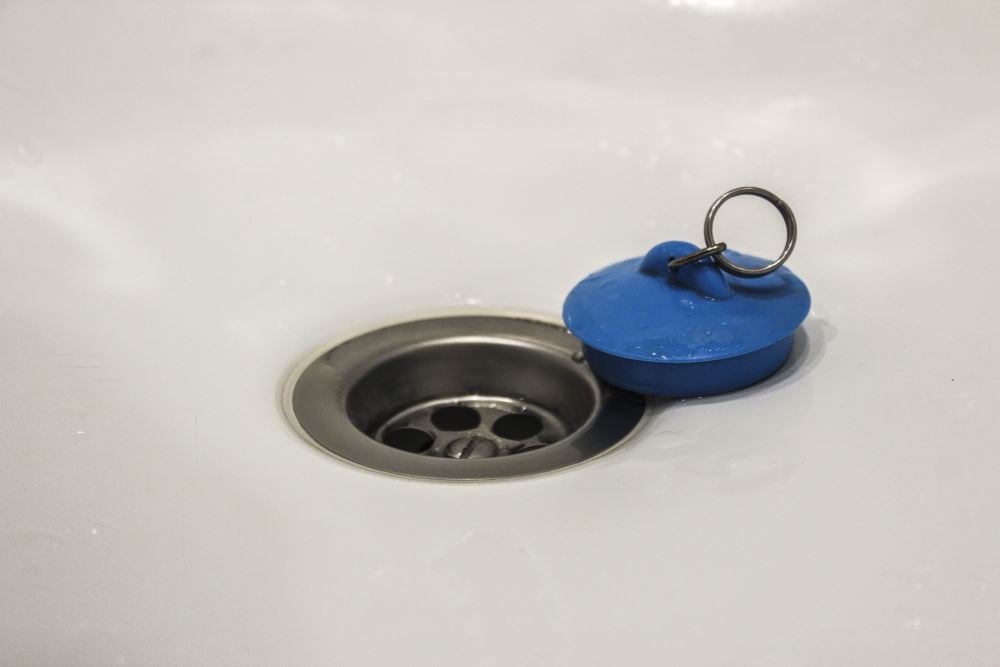
Components Explained:
- Strainer: Catches larger debris and prevents them from going down the drain.
- Gasket: Seals the connection between the sink and the drain to prevent leakage.
- Tailpiece: Vertical section that directs water into the P-trap.
- P-trap: Curved pipe that traps water, preventing sewer gases from entering your home.
Preventive Measures for Avoiding Clogs
An ounce of prevention is worth a pound of cure. Here are some preventive measures you can take:
Tips:
- Never pour fats, oils, or grease down your sink.
- Install a high-quality strainer to catch larger debris.
- Run hot water through the sink after each use to help clear any leftover debris.
How to Handle Slow-Draining Sinks
A slow-draining sink is a common issue many people encounter. Here are some steps you can take:
Steps:
- Remove and clean the strainer.
- Use a plunger to try and dislodge any minor clogs.
- Consider using a drain-cleaning solution or a plumbing snake for more stubborn clogs.
Common Problems and Their Solutions
Different sinks experience various issues depending on their usage and the type of waste they encounter.
Common Problems:
- Foul Odor: Often due to rotting food debris caught in the P-trap.
- Gurgling Noises Usually indicate trapped air within the drainage system.
- Constant Clogs: This may signify a more substantial issue further down the line, possibly requiring professional help.
DIY Sink Drainage Fixes
There are several do-it-yourself fixes for minor sink drainage problems that you can try before calling a professional.
Fixes:
- Use a mixture of vinegar and baking soda for natural drain cleaning.
- Employ a hand-cranked drain auger for tackling deeper clogs.
- Check and replace worn-out gaskets and seals.
When need a local plumber
Not all drainage issues can be resolved with DIY methods. Here’s when you should consider hiring a professional:
Signs:
- Recurrent clogs despite repeated clearing attempts.
- Water backs up in other fixtures when you use the sink.
- The foul sewage smell persists even after cleaning the P-trap.
Regular Maintenance Routine
Regular upkeep can go a long way in preventing most drainage issues.
Routine:
- Weekly rinsing with hot water.
- Monthly inspection for leaks or loose fittings.
- Bi-annual deep cleaning of the drainage system, including the P-trap.
Have a Clogged Sink Drainage?
If you’re unsure whether your sink is clogged, there are a few ways to tell slow-draining sinks.
- One way is to pour a pot of boiling water down the drain. Your sink will likely clear if the water quickly flows down the drain.
If the water doesn’t flow down the drain or takes a long time to disappear, then it’s likely that your sink is clogged.
- Another way to check is to pour a cup of cold water into the drain and wait a few minutes.
If the water disappears quickly, then your sink is likely to clear. If the water sits at the bottom of the sink, then your sink is likely clogged.
How to Clear a Clogged Sink Drainage?
There are a few ways that you can clear a clogged sink drain:
- A sink plunger is probably the most common method for clearing a clogged sink drain. Place the plunger over the drain and push and pull until the clog is cleared.
- Using baking soda and vinegar: Pour baking soda down the drain, followed by vinegar. The two ingredients will react, forming a foam that should dislodge the clog.
- Using a wire hanger: Straighten and insert a wire hanger into the drain. Once you’ve located the clog, use the hanger to hook onto the clog and pull it out.
- Using a plumber’s snake: This tool can be purchased at most hardware stores. It’s a long, flexible wire you insert into the drain hook onto the clog and pull it out.
- Using Chemical drain cleaners: This is the last resort option, as chemical drain cleaners can be harsh on your pipes. If you decide to use this method, follow the instructions on the bottle carefully.
- Using Boiling water: Another method is to bring a pot of water to a boil and pour it down the drain. The very hot water should help break up the clog.
- Calling a professional: If you’ve tried all the above methods and nothing has worked, then it’s time to call a professional.
These are just a few tips for improving sink drainage.
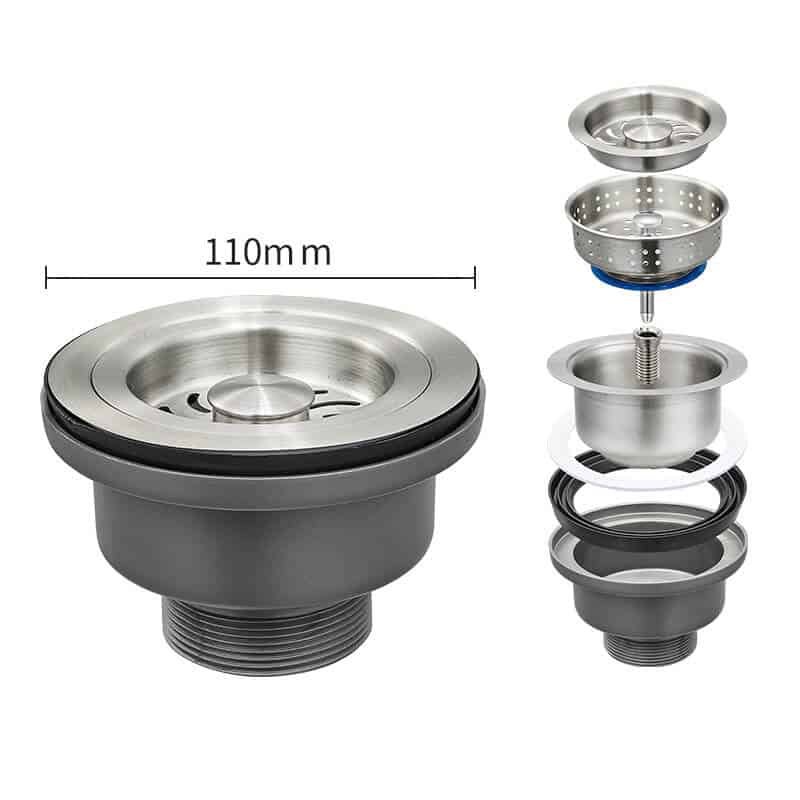
Preventing Clogged Sinks in the Future
Now that you know how to clear a clogged sink, let’s talk about how to prevent it from happening in the first place.
- Use a drain strainer: A drain strainer is a small mesh screen covering your sink’s opening. It’s designed to catch food, hair, and other debris before it can go down the drain. This is one of the easiest and most effective ways to prevent clogged sinks. Rinse off the strainer after each use and empty it into the trash. You can find drain strainers at most hardware stores or online.
- Schedule regular plumbing maintenance: This one is for homeowners with newer homes. Having your pipes cleaned and inspected regularly by a professional can help prevent clogs from forming in the first place.
- Be careful what you put down the drain: This is a good rule of thumb for all drains in your home, not just sinks. Avoid putting grease, food, hair, and other debris down the drain. These items can quickly build up and cause a clog.
- Be careful what you flush down the toilet: Flushing things like paper towels, feminine hygiene products, and baby wipes can cause clogs in the toilet and sink.
- Don’t pour grease or oil down the drain: Grease and oil can solidify in your pipes and cause clogs. Instead, dispose of grease and oil in a container that can be thrown away.
- Don’t put food scraps down the drain: Food scraps can also solidify in your pipes and cause clogs.
- Running hot water down the drain regularly will help keep the pipes clear and prevent clogs from forming.
These are some tips that can save you from the future clog.
Common Types of Sink Drainage
There are four main types of sink drainage systems: the sink drain, the p-trap, and the vent.
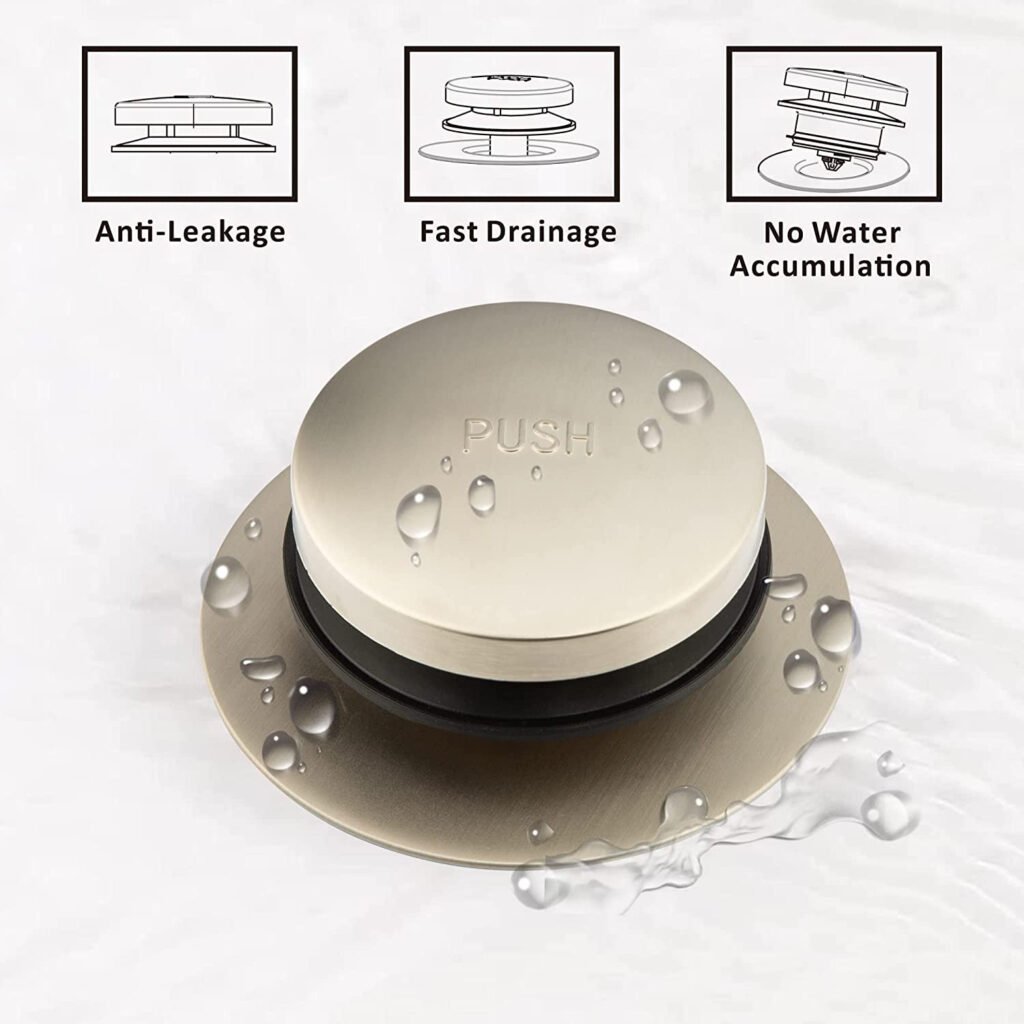
Pop-up Sink Drainage:
Pop-up sink drains are the most common type of sink drain.
They have a plug that pops up when you need to close the drain and pushes down when you need to open it.
They use a lever to push the plug down, which opens the drain, or pull the plug up, which closes the drain.
Pop-up sink drain recommended by us:
KES Bathroom Sink Drainage
A pop-up sink drain is an excellent option for anyone who wants a cleaner, more streamlined look in their bathroom.
The KES Bathroom Sink or Kitchen Sink Drain is our top pick because it’s easy to install and use and is made from durable materials that will withstand years of use.
The drain has a standard 1-3/4″ opening that fits most sink holes, and the solid metal construction is corrosion-resistant.
The push-button operation is easy to use, and the drain comes with all the necessary gaskets and seals.
You can also unscrew the upper cap to remove it for cleaning.
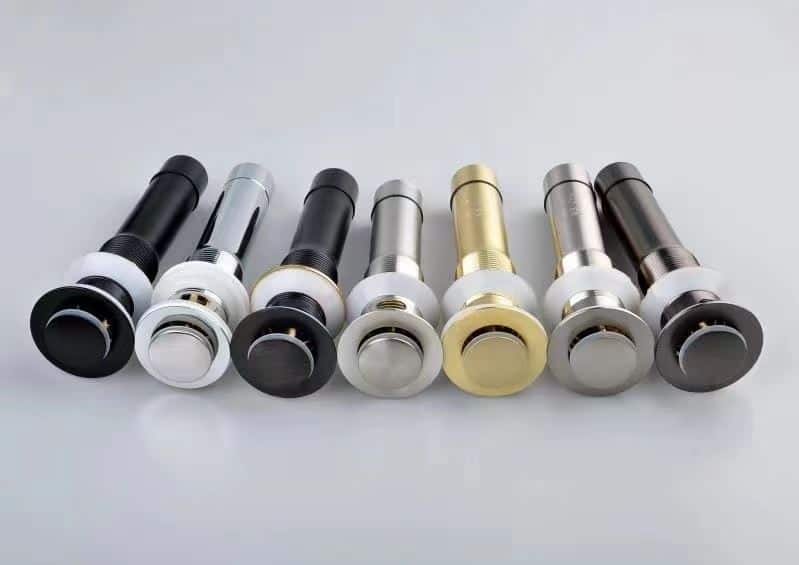
Grid Drainage:
Grid drains are a type of drain that has a grid-like design.
They’re typically made from stainless steel or bronze and have small holes that allow water to pass through while catching debris.
Grid drains are significant for people who want to clean and tidy their sinks.
The downside is that the tiny holes can sometimes become clogged.
If you have a grid drain, clean it regularly to prevent clogs.
Grid drains are best suited for sinks that don’t get a lot of use, such as guest bathrooms or powder rooms.
Our recommended grid drainage
Purelux Grid Drain Strainer
The Purelux Grid Drain Strainer is our top pick for a grid drain.
This product is made from durable brass construction and features a grid design that prevents clogging.
The tailpiece diameter is 1.25 inches, and it fits 1.5-inch sink drains. This product is easy to install and is maintenance-free.

Lift and Turn Sink Drainage
Lift-and-turn sink drains are a type of drain with a knob on the top that you can lift to open and close the drain.
They’re easy to use and don’t require any special tools for installation.
The downside is that the knob can become loose over time, which can cause leaks.
Our recommended Lift and turn drainage
Kingston Brass KB3001 Fauceture
The Kingston Brass KB3001 is our recommended lift and turn-to drain for vessel sinks.
It is made from solid brass for durability and reliability and features a premium color finish that resists tarnishing and corrosion.
The push pop-up mechanism makes it easy to install, and the included pop-up drain makes it easy to use.
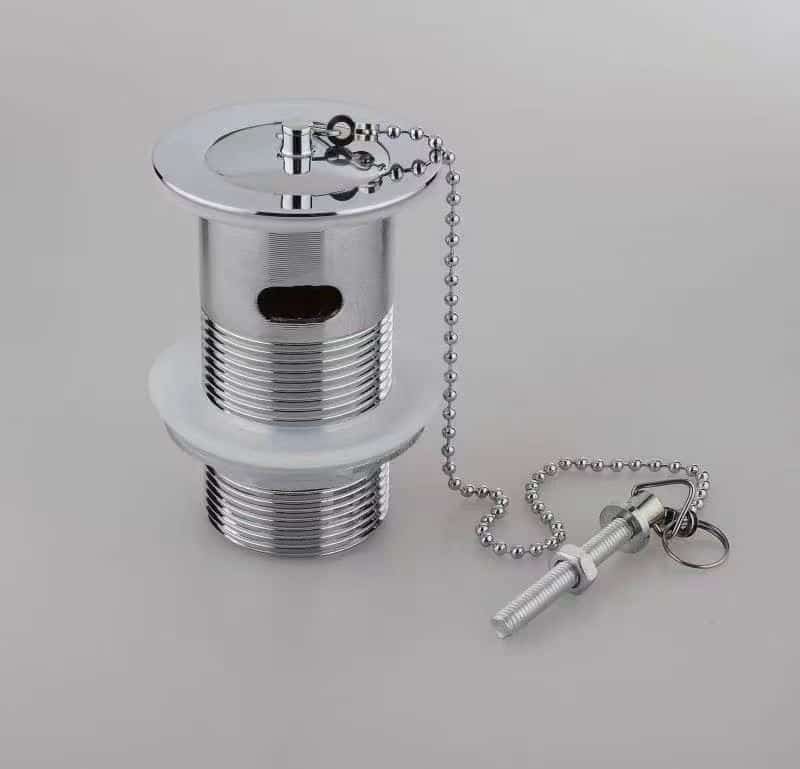
Sink Drainage Stoppers:
Sink drain stoppers are a type of drain cover that fits over the drain to prevent debris from going down the drain.
They’re typically made from rubber or silicone and can be placed over the drain when not in use.
Sink stoppers are great for people who want to clean and tidy their sinks.
Our recommended Sink Stopper:
OXO Good Grips 2-in-1
The OXO Good Grips 2-in-1 Sink Strainer & Stopper is an excellent tool for any kitchen. It works as a strainer to trap food scraps and a stopper to fill sinks with water.
The tough stainless steel withstands loads of dishes without staining, while the soft silicone underside won’t scratch sinks. The durable silicone basket flips inside out for easy, thorough cleaning.
The OXO Better: If you experience an issue with your OXO product, contact OXO for a repair or replacement.
Sink Drainage FAQs
Q: Why is my sink drainage slow?
A: There are a few possible reasons for the slow-draining sink. The most common cause of slow draining is a clog in the drain pipe. A soap scum, hair, or food debris build-up can cause clogs.
Another possibility is a blockage in the vent pipe. The vent pipe allows air to enter the drain system, which can cause drainage problems if blocked.
Q: How do I clear a clogged sink drain?
A: If you have a clog in your sink drain, you can try a few things to clear it. First, try using a plunger to dislodge the clog. If that doesn’t work, you can use a drain snake or auger to remove the clog. Finally, if those methods don’t work, you may need to call a plumber to clear the drain.
Q: How do you clear the Sink Overflow hole?
A: The sink overflow hole is designed to allow water to drain if the sink becomes full. To clear the overflow hole, use a plunger to dislodge any debris. You may also need a drain snake or auger if the clog is further down the drain pipe.
Q: What if my paper towel goes down the drain?
A: If your paper towel goes down the drain, it will likely cause a clog. You must use a plunger or a drain snake to remove the paper. If those methods don’t work, you may need to call a plumber.
Wrapping Up:
Thank you for reading! We hope this guide helped teach you how to improve sink drainage. If you have any further questions, please feel free to contact us.
With over 19 years of experience in basin waste manufacturing, we have the knowledge and expertise to help you with any questions.
Conclusion
Maintaining a well-functioning sink drainage system is crucial for both hygiene and convenience. By following this guide, you can keep your sink operating at its peak efficiency, handle minor issues independently, and know when to call professionals for more complex problems. Remember, prevention is always better than cure, so make these tips and tricks a part of your regular maintenance routine.

